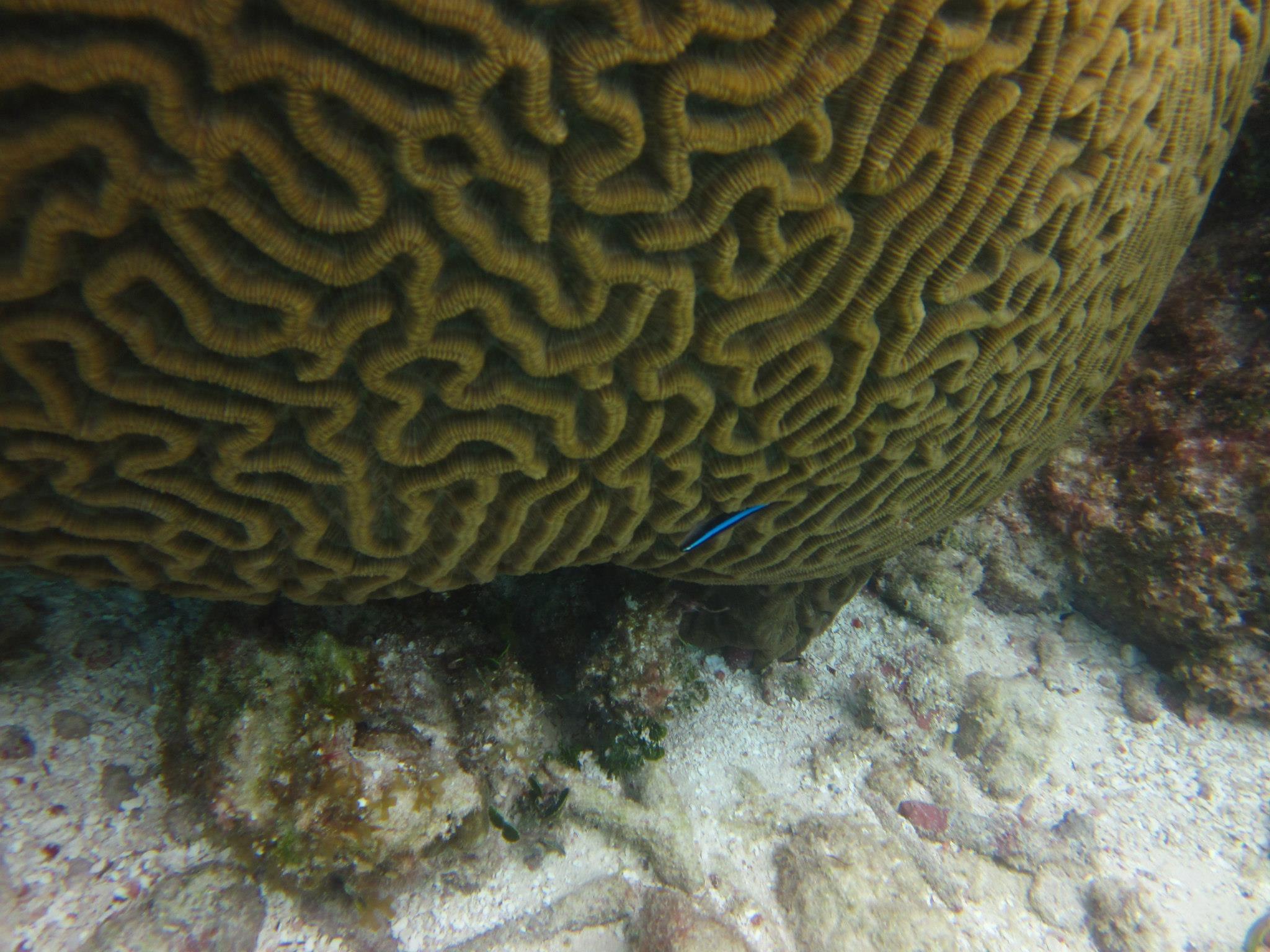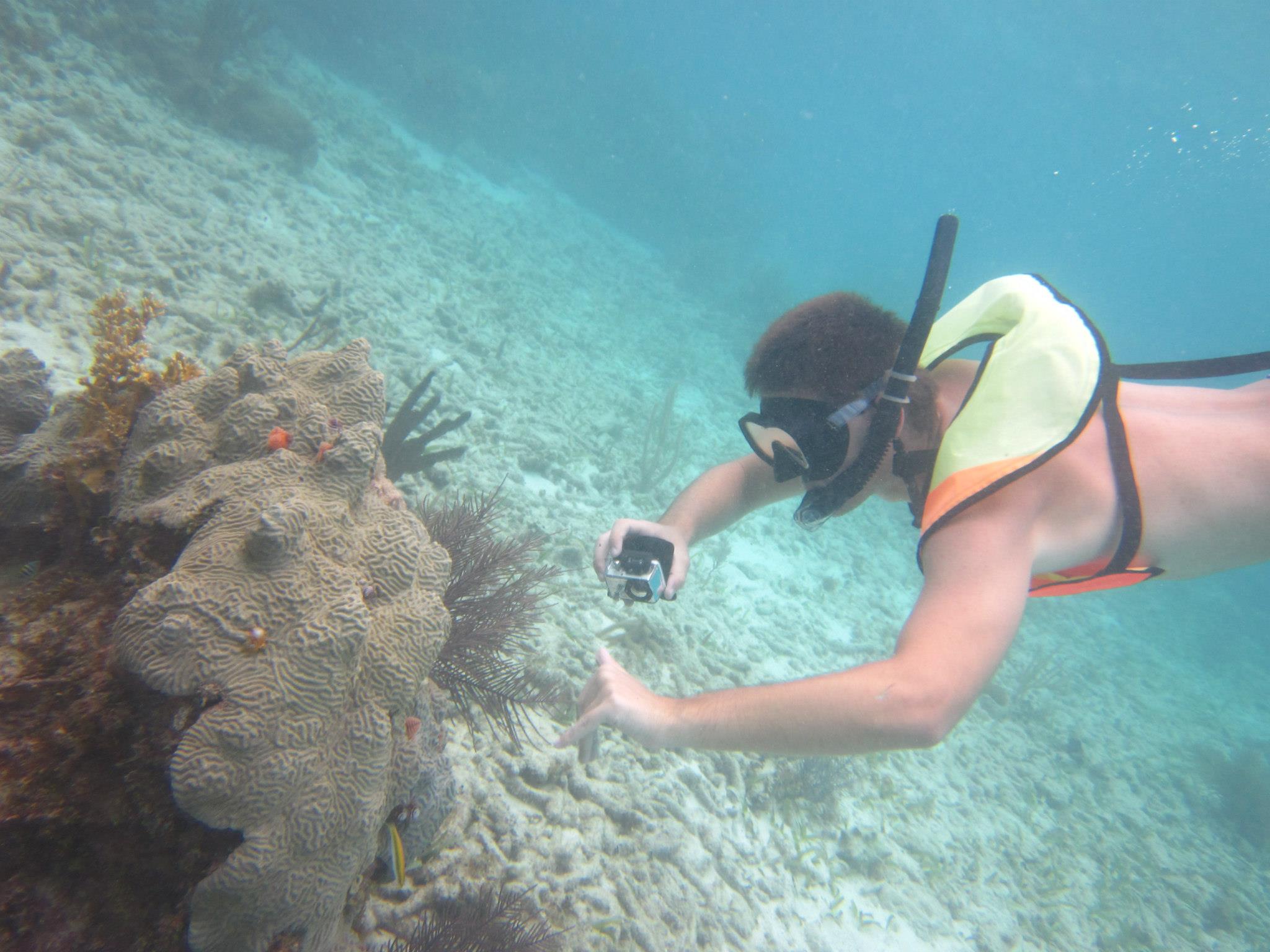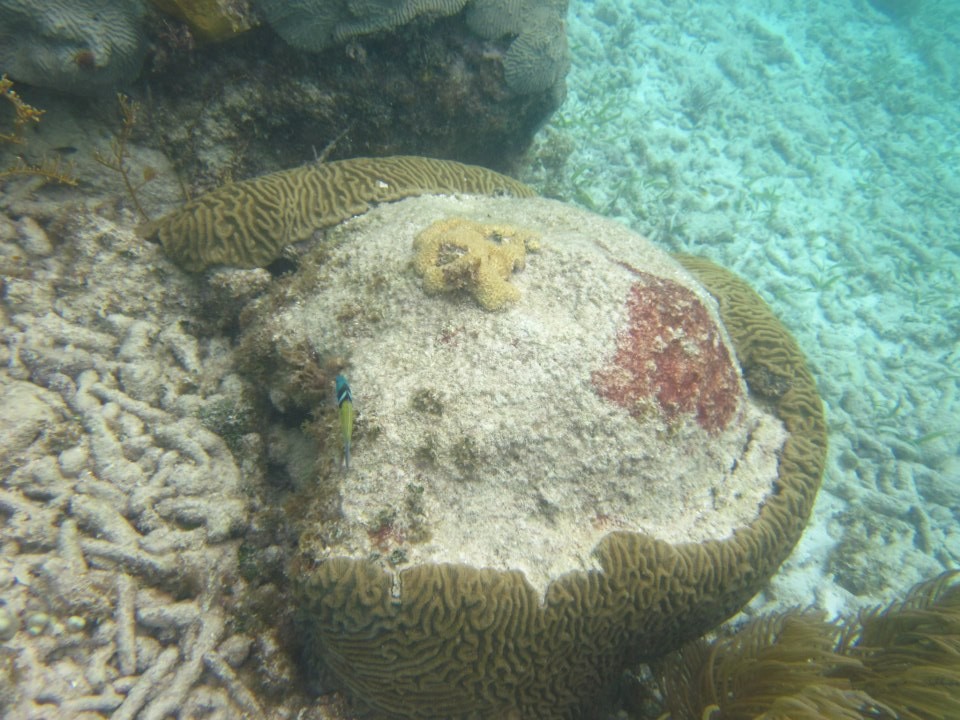Habitat
"Through co-evolution with unicelled symbiotic algae call zooxanthellae, corals have developed a special ecological relationship leading to improved respiration, metabolism, waste excretion, and, especially, enhanced growth rates."
- George T. Stanley, Jr. and Peter K. Swart 1995.
In this article, it talks about the framework of developing coral reefs, based on the relationship that corals (i.e. brain coral) have with the zooxanthellae. These zooxanthellae use the sun to make food for brain coral while feeding off it's waste. And brain coral provides these zooxanthellae with plenty of oxygen and protection.
The zooxanthellae require the sun to make food for the brain coral, which is the main reason why you will find brain corals in shallow waters. You can find them in lagoons, upper reefs, and some slopes. My first encounter with Diploria labyrinthiformis was snorkeling in the Pacific, down south in Key Largo, FL. In many of the places it was less than twelve feet of water and there was a strong current. Many shallow water fish also thrive around brain coral and other corals.
This picture here is of a young Damselfish thriving on the brain coral.
Different types of brain coral are distributed all around the world. These places include: Aruba, Atlantic, Belize, Bermudian Exclusive Economic Zone, Bonaire, Caribbean Sea, Cayman Islands, Colombia, Costa Rica, Cuba, Curaçao, Gulf of Mexico, Hispaniola, Honduras, Jamaica, Mexico, Panama, Puerto Rico, Trinidad and Tobago, Venezuela, and West Atlantic. But if you're looking just at Diploria labyrinthiformis, they are found in only the Caribbean, Bahamas, southern Florida, and Bermuda.
 The blue circled represent the majority of the places where Diploria
labyrinthiformis is found, and the rest of the red dots are other
corals and coral reefs.
The blue circled represent the majority of the places where Diploria
labyrinthiformis is found, and the rest of the red dots are other
corals and coral reefs.






